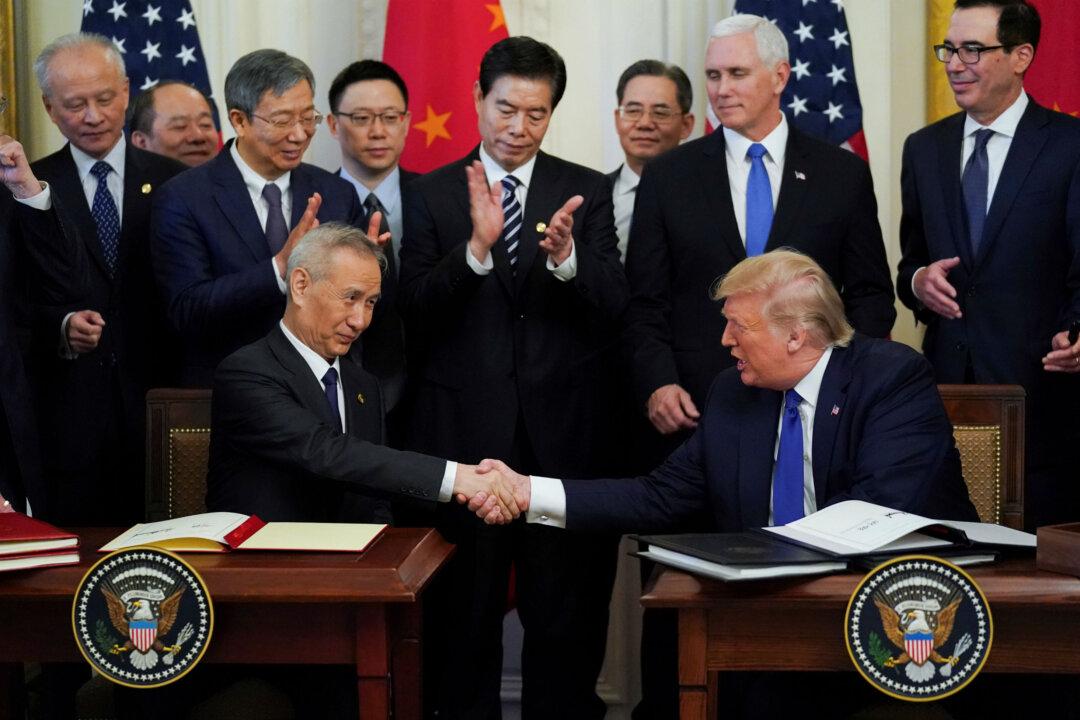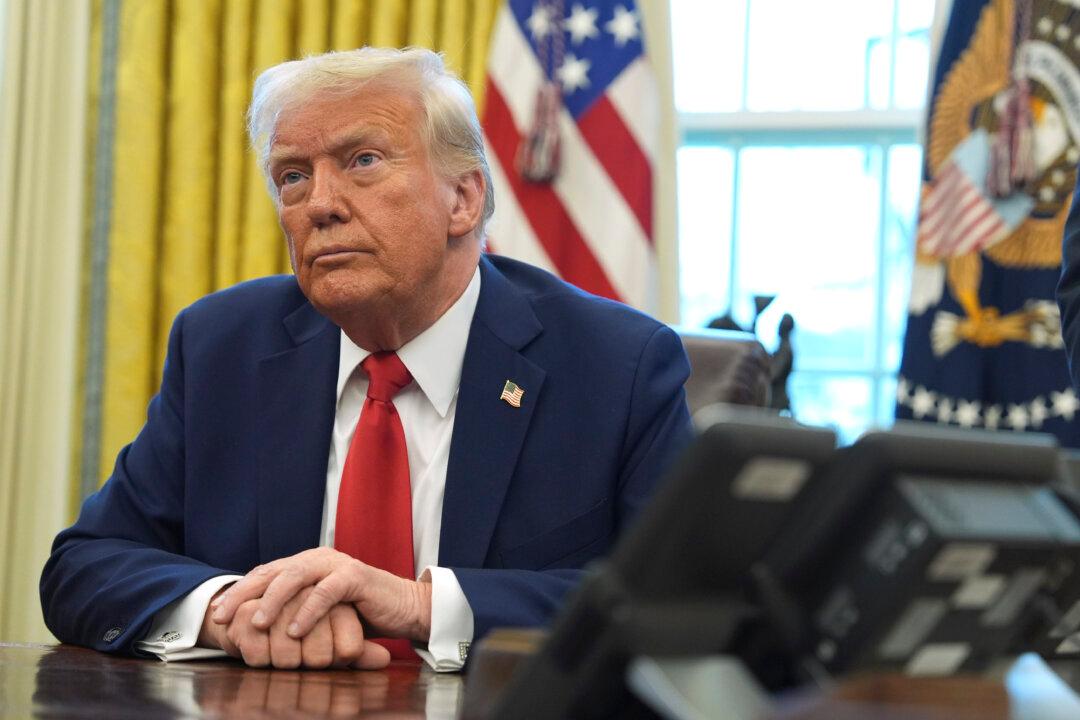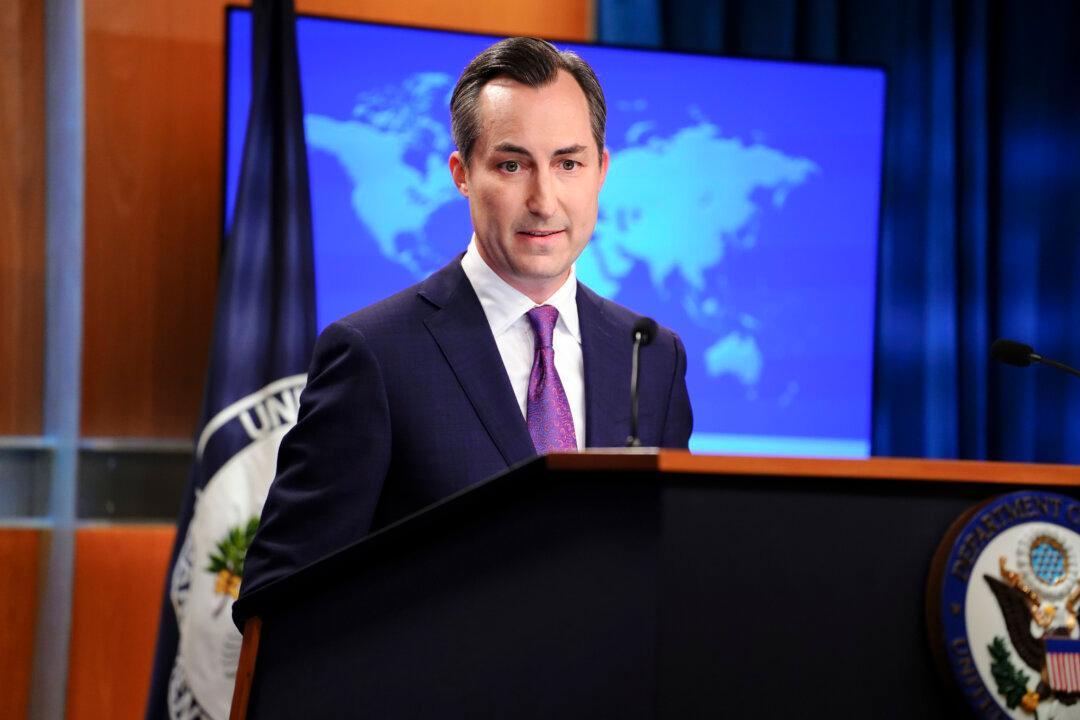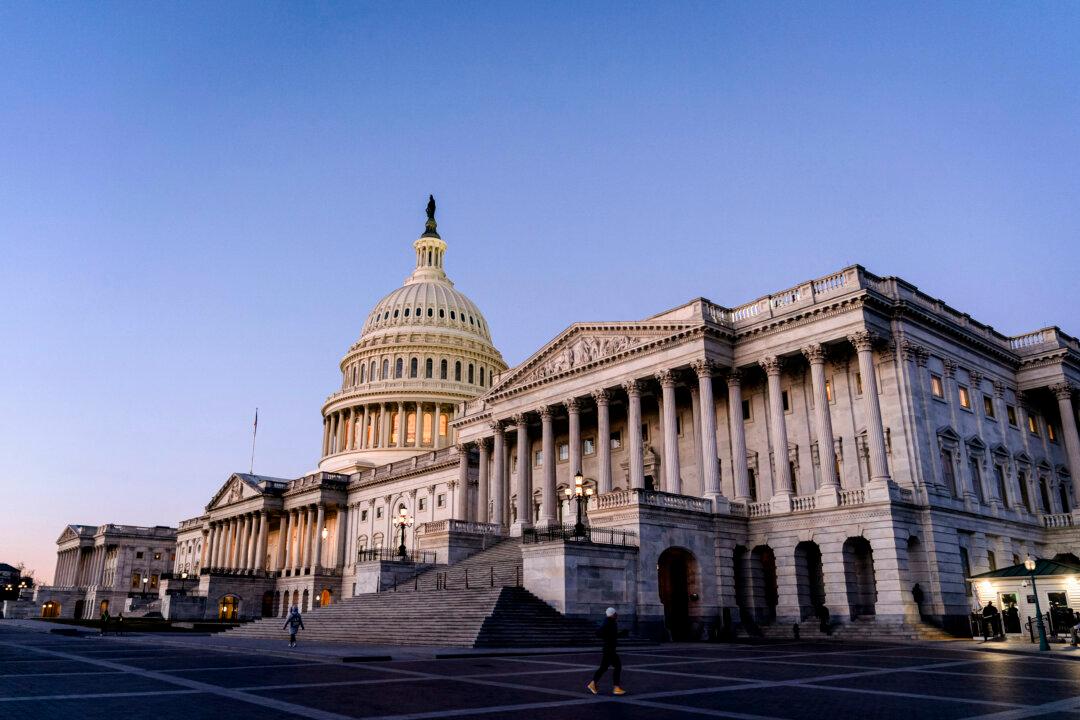The United States and the Chinese regime on Jan. 15 signed a “phase-one” trade deal, cooling tensions between the world’s two largest economies in an 18-month trade war.
Prior to the deal, the United States agreed to cut tariffs to 7.5 percent from 15 percent on about $120 billion of China-made consumer goods, including flat panel televisions, Bluetooth headphones, and footwear. It also scrapped planned tariffs on roughly $156 billion of consumer products, including cell phones, toys, and laptops.





